SUMMARY
VENOM: None
PREVALENCE: Common
ACTIVE PERIOD: Active at night and during the day
KEY ID FEATURES: Grey to light tan with black and brown jagged bands running the length of the body, a fully red variant can also be found
BEHAVIOR: Capable of delivering slashing cuts with rear egg slicing tooth, will attack readily if handled
SIZE: Small - 40-60cm
IUCN: LC - Least Concerned
OTHER: Very distinct, not easily mistaken with other snakes
QUICK ASSESSMENT 0-10
GALLERY
IMPORTANT: Many snakes have significant variance in coloration and pattern even within the same species. There can also be extreme differences in appearance from juveniles to adults so it is important to never assume you have properly identified a snake.
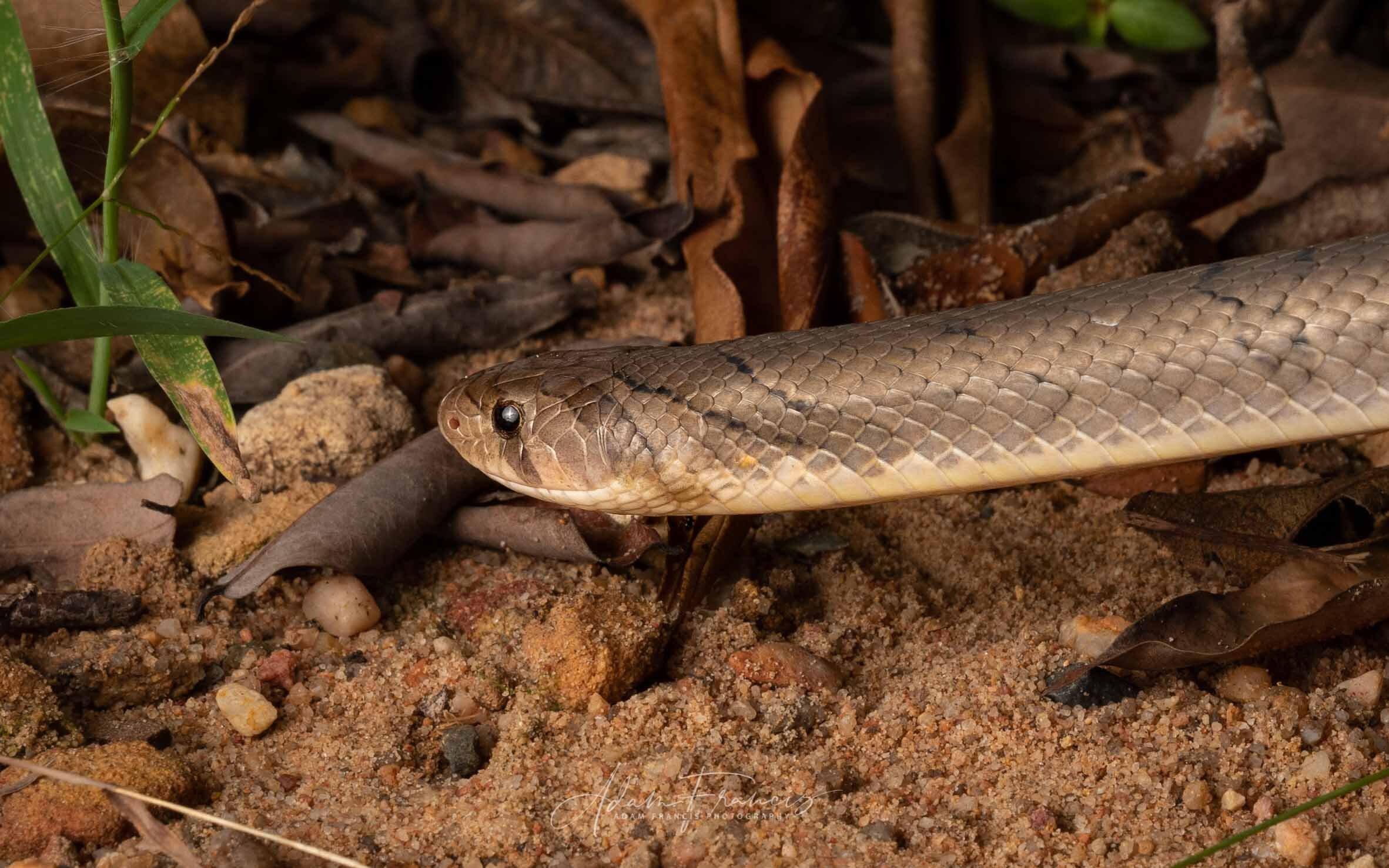
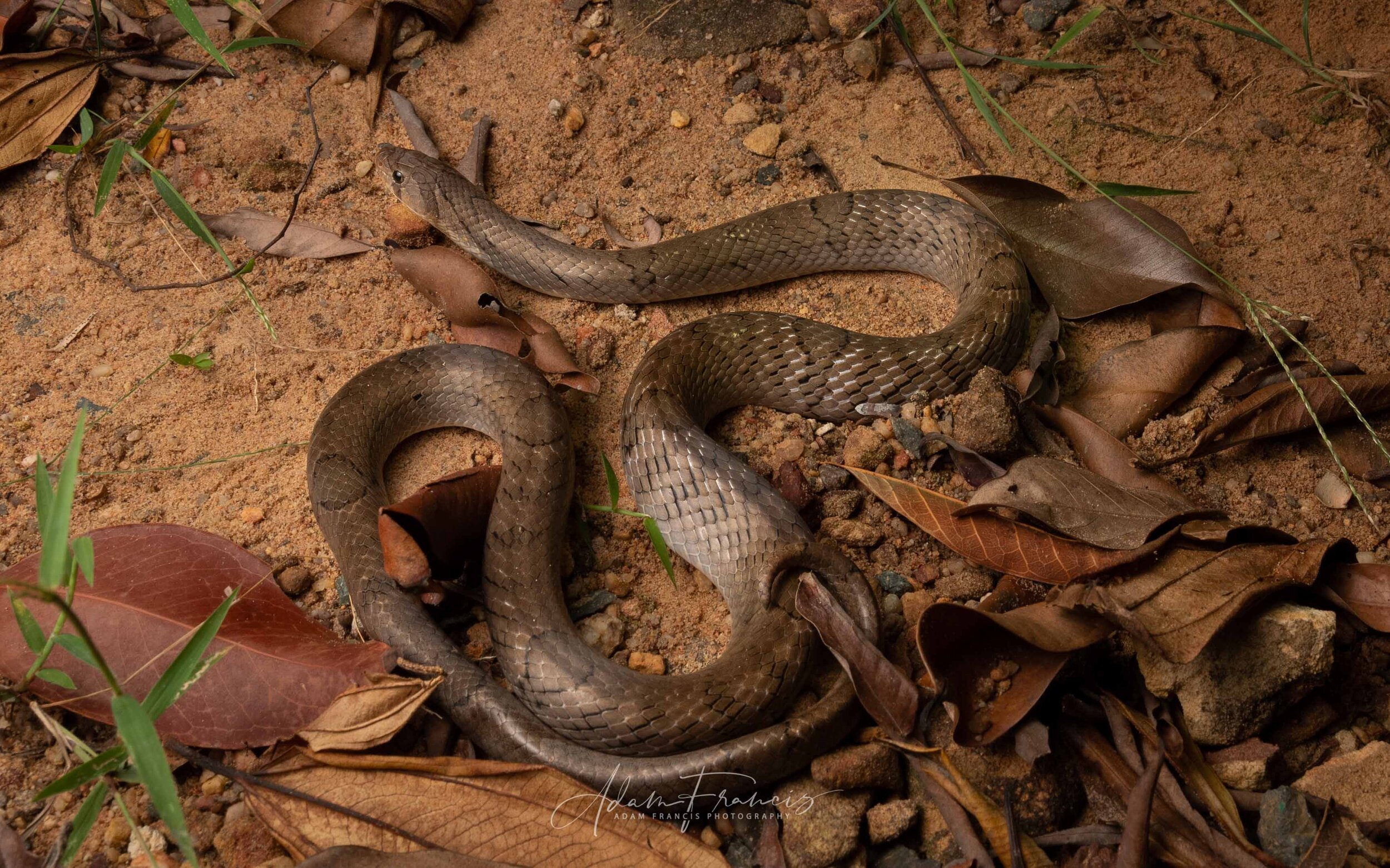
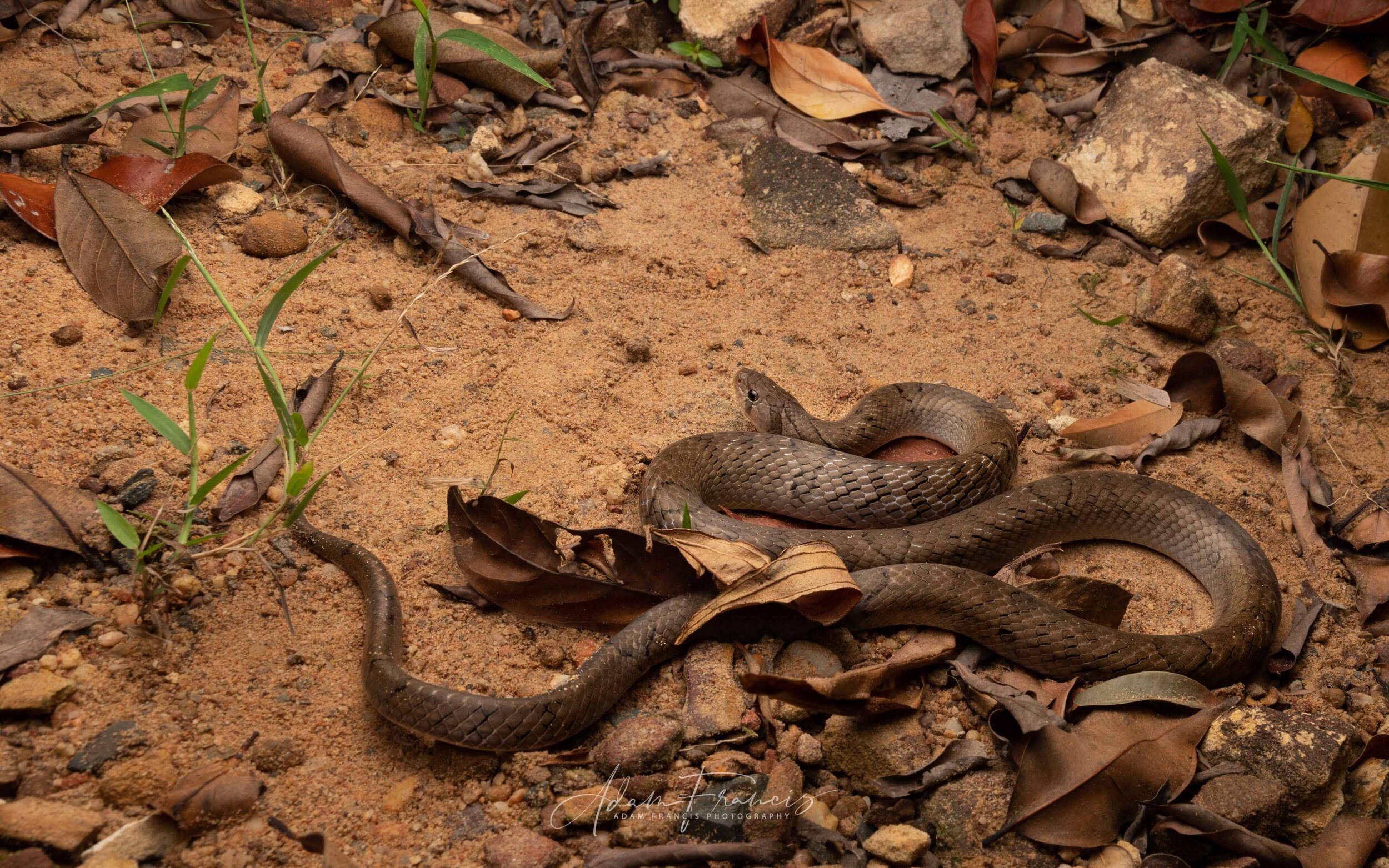
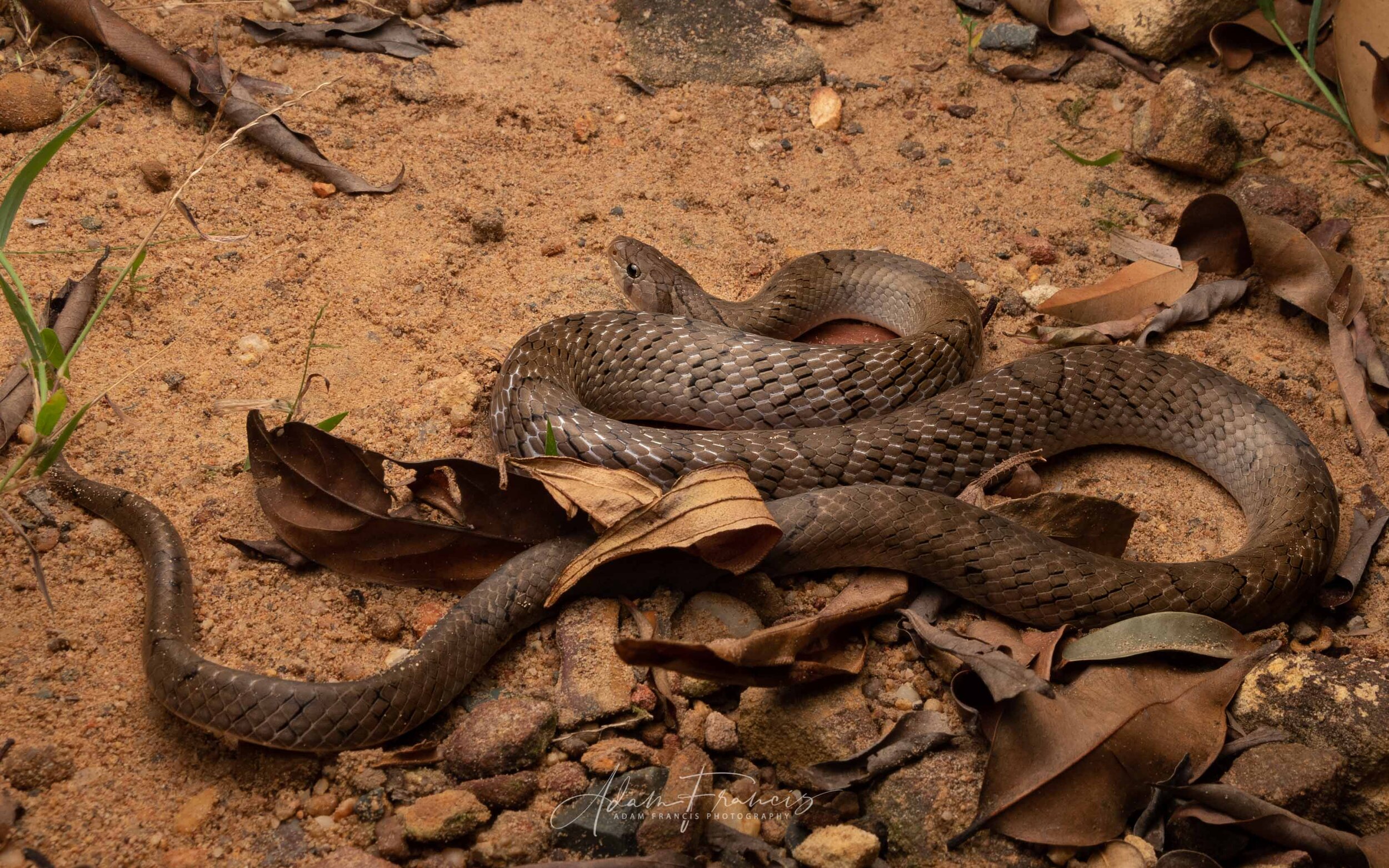
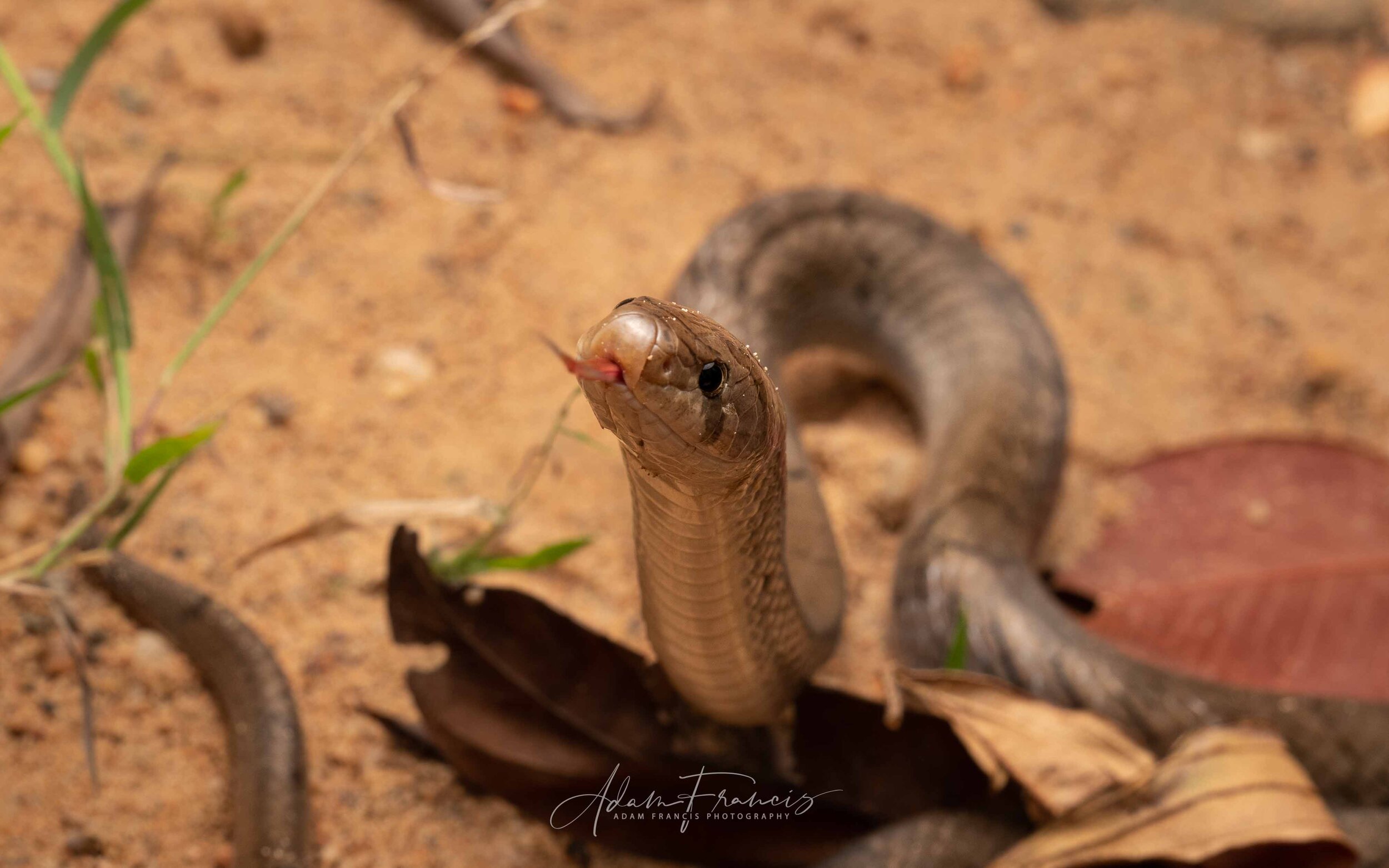
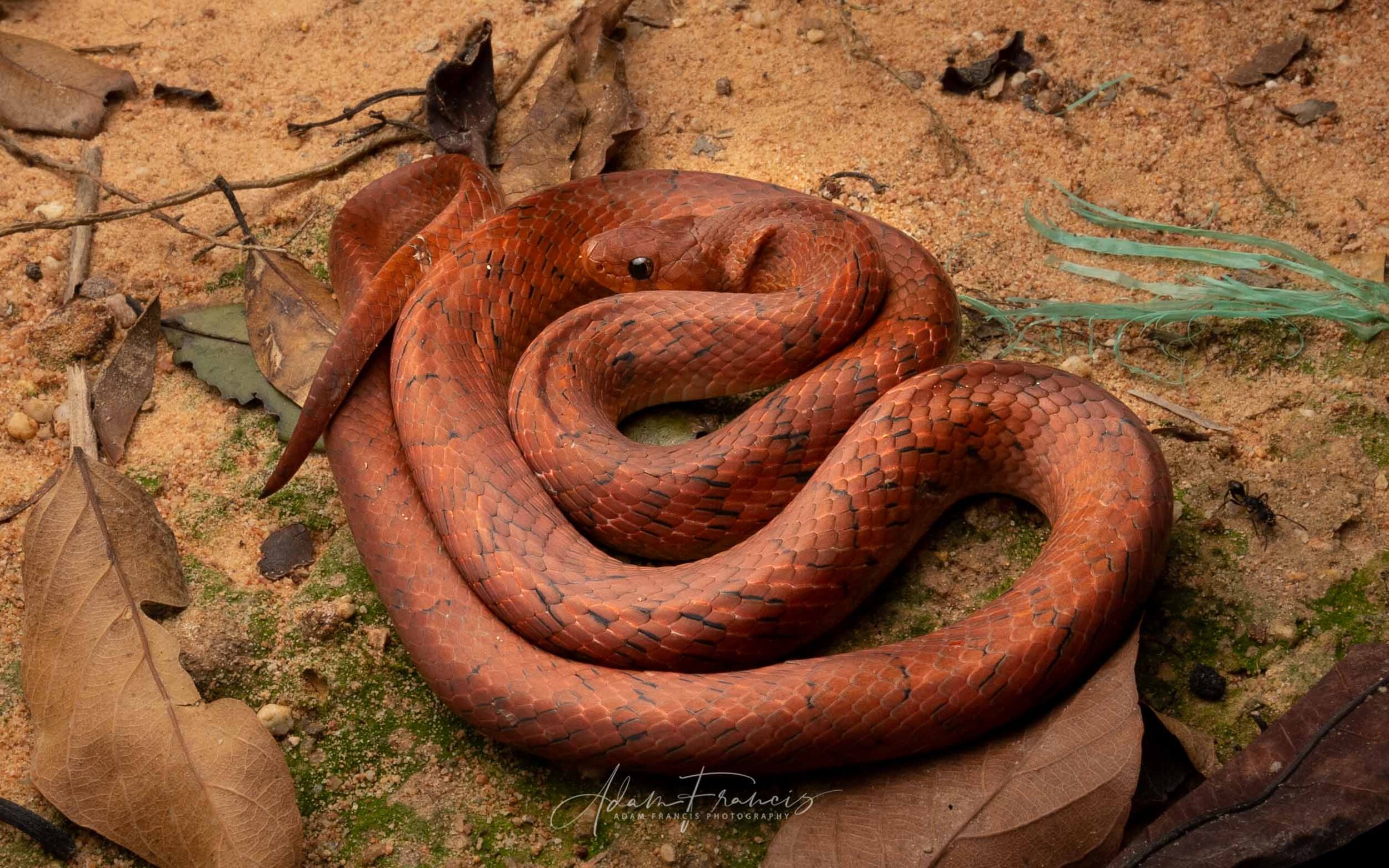
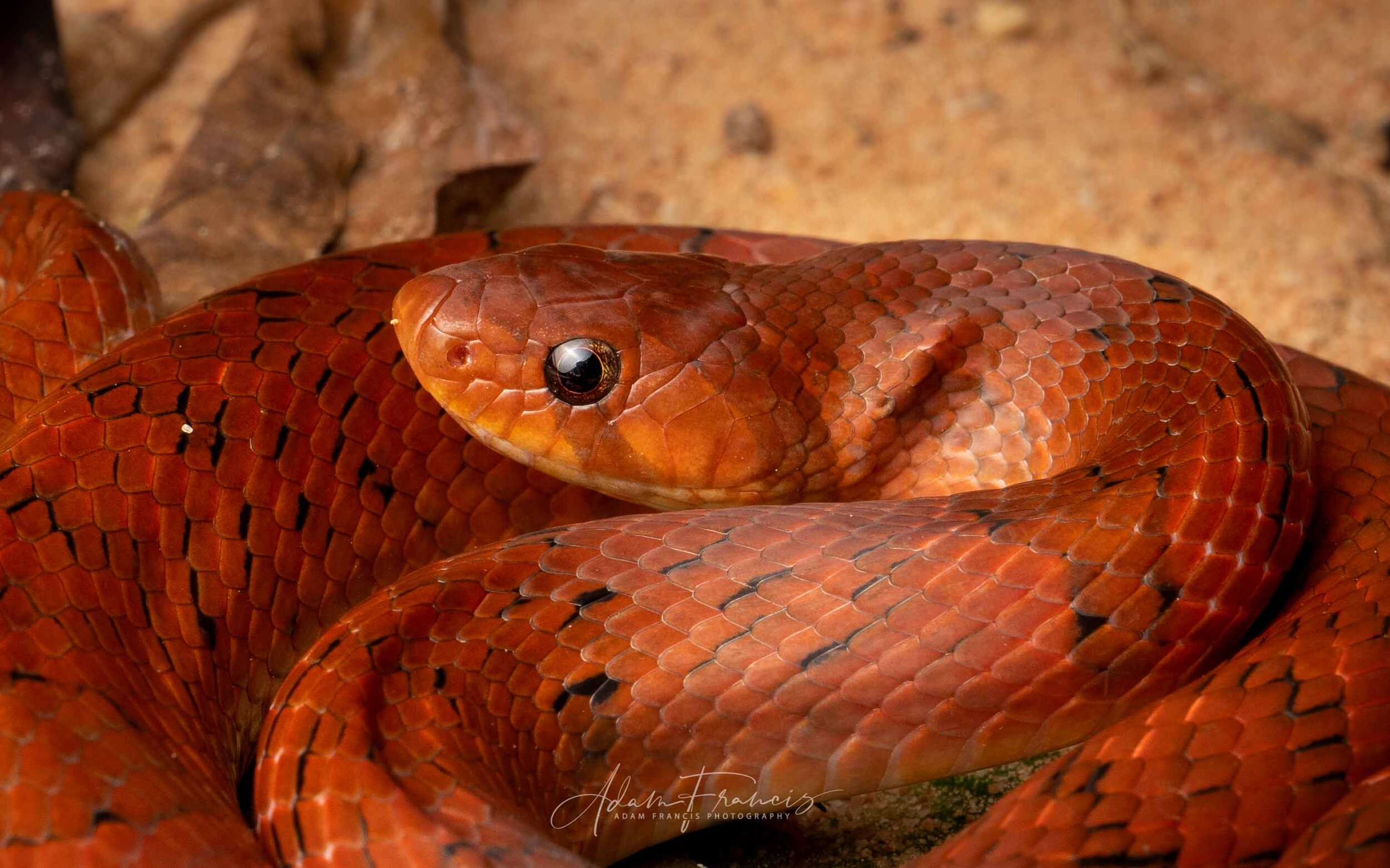

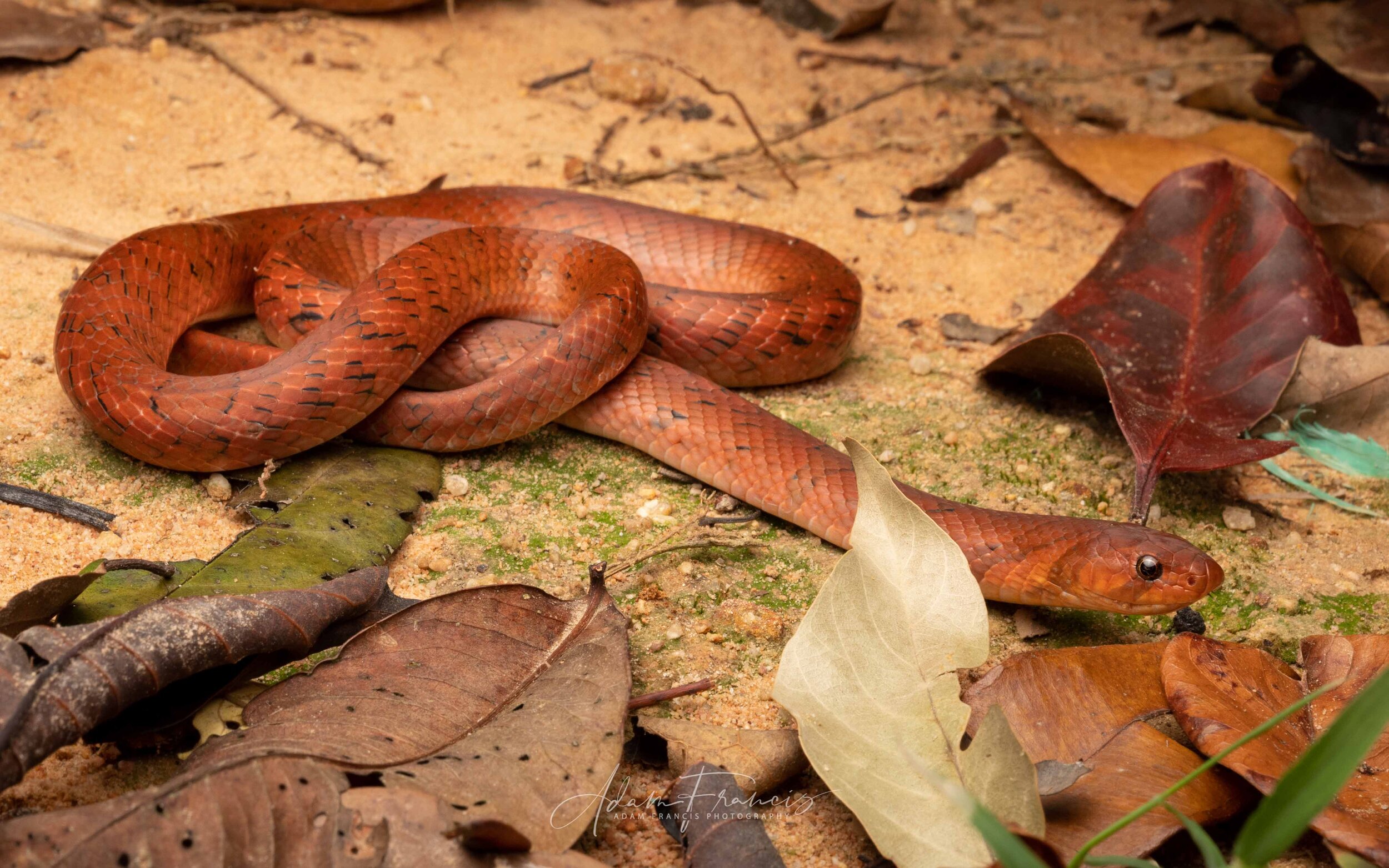
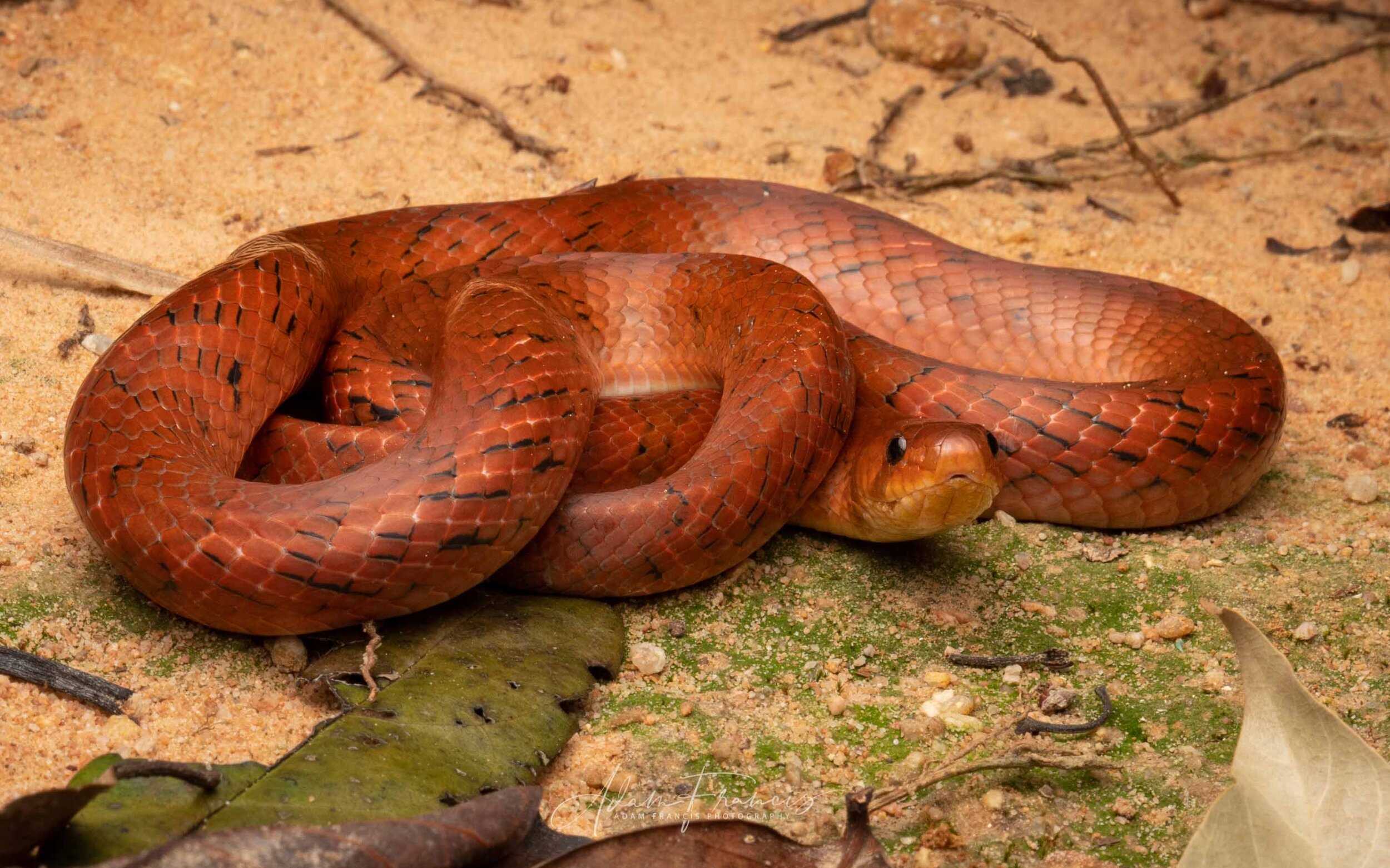
See a video of this species being found in the field here:
DESCRIPTION
The Small-Banded Kukri is easy to identify by its grey to tan color and black and brown jagged bands running the length of its body. There is also a red variant which is brick red all over with washed out red markings similar to the grey and tan morphs. Almost all will show brown markings on top of the head with bands running below each eye and on the back of the jaw on either side. a chevron marking can be found on top of the head. The head is small relative to the body with a plow like nose used in burrowing. Yellow or brown or red eyes with large round pupils and the characteristic 'Kukri Knife' shaped rear egg slicing tooth.
BEHAVIOR
A diurnal and nocturnal species they can also be found at dusk or early morning. Generally docile when observed and will flee deliberately though not terribly quickly when disturbed. Though not poisonous all Kukri snakes are capable of opening their mouth and slashing their head back and forth in order to slice with their modified rear egg cutting tooth. While not life threatening these cuts can be delivered quickly and in high volume making this snake quite a handful despite its small size of a maximum ~.5 meters. The Small-Banded Kukri is also an adept burrower and will do so both to forage for food and to seek shelter. As indicated by their infamous back teeth they are fond of eating reptile eggs along with other small prey.
HABITAT
A completely terrestrial snake the Small-Banded Kukri is found mostly in forested areas as well as water culverts and rocky out crops. It is also common in populated ares near forest and jungle. Somewhat commonly seen in the wild and should never be handled due to its ability to deliver slashing cuts.
MISTAKEN IDENTITY
NO SNAKE SHOULD EVER BE HANDLED BY ANYONE BUT EXPERTS: Not normally confused with other species due to its unique markings and color profile.

